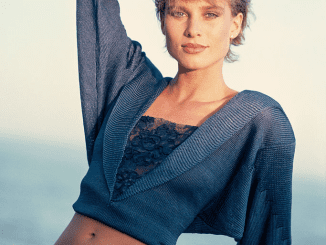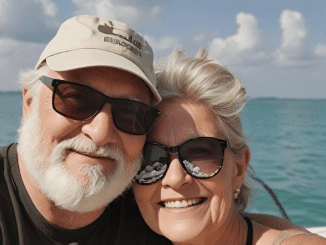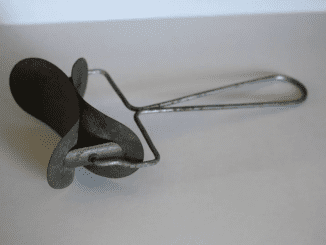In a world full of puzzles, riddles, and mind-bending teasers, here’s one that puts your attention to detail to the ultimate test. In this intriguing puzzle, the question is simple: “Who is the Real Doctor?” Look at the image carefully, where you’ll see two figures labeled as Person A and Person B, each sporting attire and actions that could make either of them the real doctor. But don’t be fooled! To solve this, you’ll need to pay close attention to the smallest details. Are you ready? Let’s dive in and examine the clues.

Common Mistakes People Make While Solving the Puzzle
When faced with brain teasers like this, many people jump to conclusions based on surface appearances. In this puzzle, Person A is dressed in a full-body protective suit, while Person B is wearing a mask and a white coat. Each has their own “doctor-like” appearance, but looks can be deceiving. Here’s where people often slip up:
- Relying Solely on Outfits: It’s easy to assume that Person A, with their protective suit, must be the doctor. However, it’s crucial to remember that attire alone doesn’t determine someone’s profession. Often, the answer lies in subtle, contextual clues.
- Missing Behavioral Cues: Body language and interaction with others can say a lot. Observing how each person in the image behaves can reveal more about their role than their clothing.
By carefully evaluating both attire and behavior, we can arrive at a more accurate conclusion.
Step-by-Step Guide to Solving the Puzzle
Let’s break down each element that can help us determine the real doctor.
1. Attire and Its Implications
- Person A is dressed in a protective suit, the kind you’d often see in environments with infectious diseases or hazardous materials. While this can be part of medical or laboratory work, it isn’t the standard attire for a doctor working directly with patients in a hospital or clinic.
- Person B wears a face mask and a white coat. This is the typical attire we see doctors wearing, especially in settings where they’re treating patients. Unlike the protective suit, this outfit is more suited to general medical interactions.
2. Observing the Interaction with the Child
- Person A’s Posture: They appear somewhat distant and stiff, which doesn’t convey the warm, hands-on approach we associate with healthcare providers working closely with patients.
- Person B’s Actions: Person B is holding the child’s hand in a reassuring manner, which is a comforting gesture more commonly associated with doctors or healthcare providers who need to put young patients at ease. This physical connection is subtle but significant, hinting that Person B is likely the true doctor.
3. The Key Detail – Flashlight in Person B’s Pocket
- A small yet critical detail is the flashlight tucked in Person B’s pocket. Flashlights are standard tools used by doctors during examinations to check a patient’s eyes, throat, or other areas needing close inspection. This practical item suggests that Person B is prepared for direct medical examination, a clear sign they are the actual doctor.
- Why This Matters: Medical professionals often carry necessary tools, and a flashlight is a common one for doctors. This small detail is easy to overlook but makes a strong case for Person B’s identity as the doctor.
Putting the Clues Together: Final Answer and Explanation

After examining all the clues—attire, body language, and practical tools—we can conclude that Person B is the real doctor. Here’s why:
- Professional Attire: The white coat and mask are more indicative of a doctor’s outfit than the full protective suit.
- Behavioral Cues: The comforting hand-holding gesture suggests a compassionate interaction typical of a doctor.
- Essential Tools: The flashlight in the pocket confirms Person B’s role, as it is a common tool for examinations.
In this case, while Person A’s attire initially gives off a “medical” vibe, the finer details point toward Person B as the genuine doctor.
Why Brain Teasers Like This Are Great for Developing Observation Skills
Puzzles like these aren’t just fun—they’re also fantastic for sharpening observation and critical thinking skills. Here’s why these kinds of riddles are beneficial:
- Enhancing Attention to Detail: Solving puzzles like this requires looking beyond the obvious and paying attention to small yet crucial details, training your mind to catch subtleties.
- Building Logical Reasoning: Analyzing and comparing evidence to make a logical conclusion improves reasoning skills that are useful in everyday decision-making.
- Boosting Memory and Recall: When you actively engage in finding clues, your brain gets a memory workout that can enhance your overall recall ability.
Whether you’re solving puzzles alone or with friends and family, these activities offer both entertainment and mental stimulation.
Exploring Other Puzzles to Further Improve Cognitive Skills
If you enjoyed solving this puzzle, there are plenty of other brain teasers to try. Riddles that focus on logical reasoning, hidden object puzzles, and pattern recognition all provide unique mental challenges. Here are some types you might enjoy:
- Logic-Based Riddles: Puzzles that require you to deduce a solution based on a series of logical statements or clues.
- Visual Puzzles: Hidden object games or spot-the-difference puzzles that test your ability to pick out details.
- Pattern Recognition: Puzzles that involve identifying sequences or patterns, useful for improving analytical skills.
Brain teasers are a great way to take a break while giving your mind a beneficial workout. They offer a refreshing challenge that encourages focus and keeps the brain agile.
The Takeaway: Solving Puzzles Enhances Mental Agility
In a world filled with distractions, taking the time to solve a simple puzzle can be incredibly grounding. Not only does it provide a break from routine, but it also keeps the brain active and engaged. Whether you got the answer right away or needed a few hints, the process of solving this puzzle has likely improved your observation skills and sharpened your focus.
Next time you encounter a tricky riddle or a hidden-object challenge, remember: it’s all about looking beyond the surface and finding those small details that make all the difference.
So, did you guess correctly? If you found Person B as the real doctor, you’ve got a keen eye! Keep challenging yourself with more brain teasers and share this puzzle with friends to see if they can solve it too.


